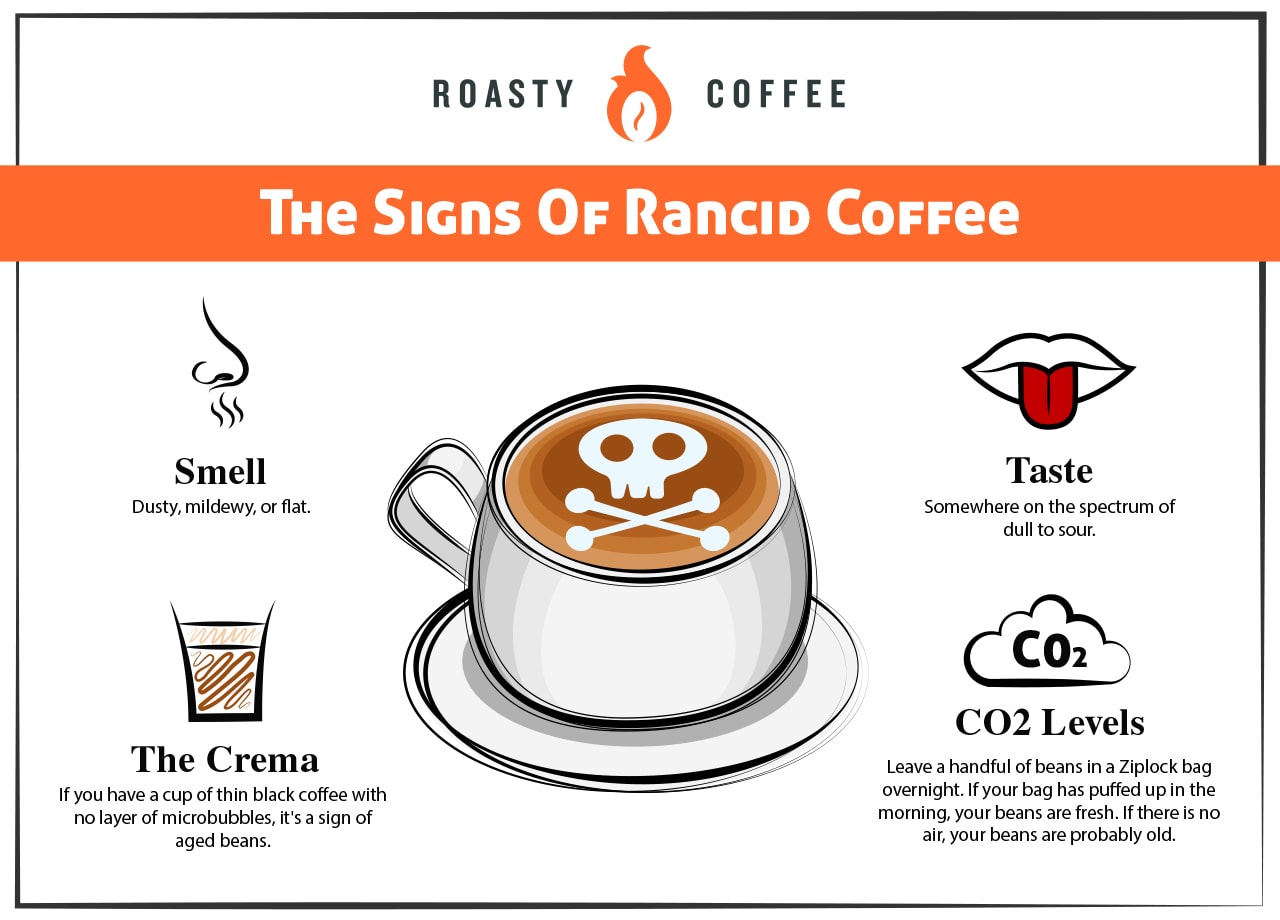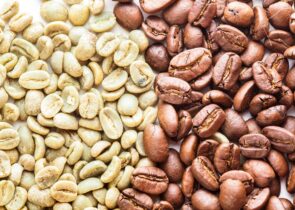A while back, there was an awesome deal for a batch of coffee beans at one of those bulk stores, so I decided to stock up — and I mean stock up. It was around bag three when the flavor started to fall flat, and I realized my mistake. Coffee, like all crops, will eventually fall victim to time. The worst part? I had two more (giant) bags to go!
Maybe you’re a bulk shopper who plans to stock up on your favorite type of coffee, or perhaps you’ve stumbled across an old bag of beans hidden in the back of a cupboard. Either way, learning the signs of expired joe and why it matters is essential if you’re passionate about drinking the freshest coffee possible.
Time can be a thief, so let’s learn how to protect what matters most!
HOW LONG BEFORE COFFEE GOES BAD?
Coffee does go bad. But not in the sense of growing mold or poisoning you. Bad coffee just tastes and smells “off.” How long your batch of beans will last depends on the type of coffee it is. If you store the coffee properly, the general rule of thumb is:
- Whole beans: six to nine months
- Ground coffee: three to five months
- Instant coffee: two to 20 years
There are variables to the expiry guidelines, of course. Large factory whole bean roasters, like Lavazza, undertake nitrogen flushes, which prolong the expiration date. If you freeze coffee (and if you do…please stop!), you’ll push the expiration date further. And once opened and exposed to oxygen, you’ll need to store it correctly. Learn more about coffee expiration here.
THE SIGNS OF RANCID COFFEE

You can’t really see bad coffee; maybe it will lose a little color, but the change is pretty subtle and hard to judge. So, the best method is to dive right in there with your nose…and mouth.
Don’t worry — you won’t be gagging on sour garbage smells or vomiting from the taste. It just won’t be as good as it should be. These are a few questions you may be asking as you learn how to identify coffee spoilage.
What does rancid coffee smell like?
Rancid coffee’s smell can best be described as dusty, mildewy, or flat.
Fresh coffee smells of…well, fresh coffee. With new beans, you’ll catch a whiff of the coffee flavors, like the deliciously nutty and caramel notes you love so much. The scent of old and stale coffee might be more akin to an ashtray or vacuum; that pleasant aroma will just be missing. This is true for all bean types — ground, whole, and instant coffee.
What does rancid coffee taste like?
Bad coffee’s taste is somewhere on the spectrum of dull to sour.
Time robs stellar coffees of all their diverse and interesting flavors, leaving something that tastes pretty empty. After enough time, more sour, bitter notes will develop. I’ve even had a friend tell me an old bag was as sharp as a lemon!
The best way to detect an off taste is to brew a cup and leave it to cool for an hour. Take a sip, and if you pick up on more sour and bitter tastes than usual, the contents of your coffee bag might be bad.
But wait! Before chucking your beans based on taste alone, you should know that gross flavors can also be attributed to bad brewing! Be sure you didn’t under-extract or make any of these common brewing mistakes.
Other ways to detect rancid coffee
Before tasting your brew, you might get a clue if your coffee is bad by checking the crema. Fresh beans will always produce a thin layer of crema on top. If you have a cup of thin black coffee with no layer of microbubbles, it’s a sign of aged beans.
For uber-fresh whole beans, you can check carbon dioxide levels. Chuck a handful of beans in a Ziplock bag with all the air removed. Leave it overnight at room temperature. If your bag has puffed up in the morning, your beans are fresh, probably no more than 10 days old. If there is still no air, you’ve got some older beans on your hands.
This is an effective test, as beans emit CO2 until they eventually oxidize. Beans more than 10 days old are certainly not considered rancid, and they can still produce great coffee. But coffee snobs out there would consider the joe past its prime.
CAN YOU GET FOOD POISONING FROM OLD COFFEE?
The chances of bacteria forming on your beans are minimal, leaving poisoning low risk. Some people will have no problem going past the shelf life. In which case, I’d suggest using extra coffee, adding sweeteners or flavors, or enjoying your coffee with milk to gain back some of the lost taste.
Disclaimer: consuming spoiled food and beverages presents certain health risks. Practice safe consumption, kids!
HOW TO MAKE COFFEE LAST LONGER
Treat your coffee right, and you’ll have a beautiful long relationship. Top tips:
- Invest in one of the many airtight containers for coffee storage on the market to lock oxygen out.
- Make sure your coffee container is opaque to keep the coffee safe from light.
- Keep your coffee in a cool, dark space to keep heat and moisture out.
- Don’t freeze your coffee. Yes, people do it, but it can destroy the beans’ flavor. Learn more about that here.
WHAT TO DO WITH EXPIRED COFFEE
Before chucking that coffee you’ve deemed spoiled, run through the smell and taste tests. If it was sealed and stored correctly, it may still be good. But if it’s actually rancid, avoid waste by recycling your beans. How do you do that? We’re glad you asked!
- Baking: There are so many recipes that call for coffee…tiramisu, brownies, meat rubs, syrups, cakes, you name it! Just make sure the coffee isn’t too far gone, as it can add sour notes to your food.
- Gardening: Use ground coffee to fertilize your garden. Not only does it add essential nutrients to the soil for plant growth, but it can also attract worms!
- Repulsion: Insects like mosquitos and pests (like slugs) hate coffee because it has compounds that are toxic to them. Sprinkle the joe around your outdoor seating areas and plants to keep bugs away.
- Exfoliation: Mix grounds into coconut oil to create a body scrub that removes dirt and dead skin, leaving you feeling unbelievably soft.
WHY FRESH MATTERS
End of that day, fresh coffee is best. Period. But if you can’t get sick from expired coffee, why does it matter? Well, I suppose it doesn’t…unless you want to drink a flavorful morning cup with a pleasing aroma and smooth mouthfeel.
Serious coffee drinkers will tell you a coffee’s shelf life is different from its taste life. Coffee’s peak flavor is found between one to three weeks after the roast date. Espresso’s sweet spot occurs between two and four weeks after roasting. With each passing day, the beans lose their aroma and potential for crema.
At the end of the day, though, it’s your level of coffee elitism and taste preferences that will ultimately guide you to decide if your beloved beans are bad.
I believe life is too short to drink bad coffee…which is why I’ve got a gallon of body scrub and a blooming garden, thanks to my poor bulk buy decision.
Happy caffeinating!







